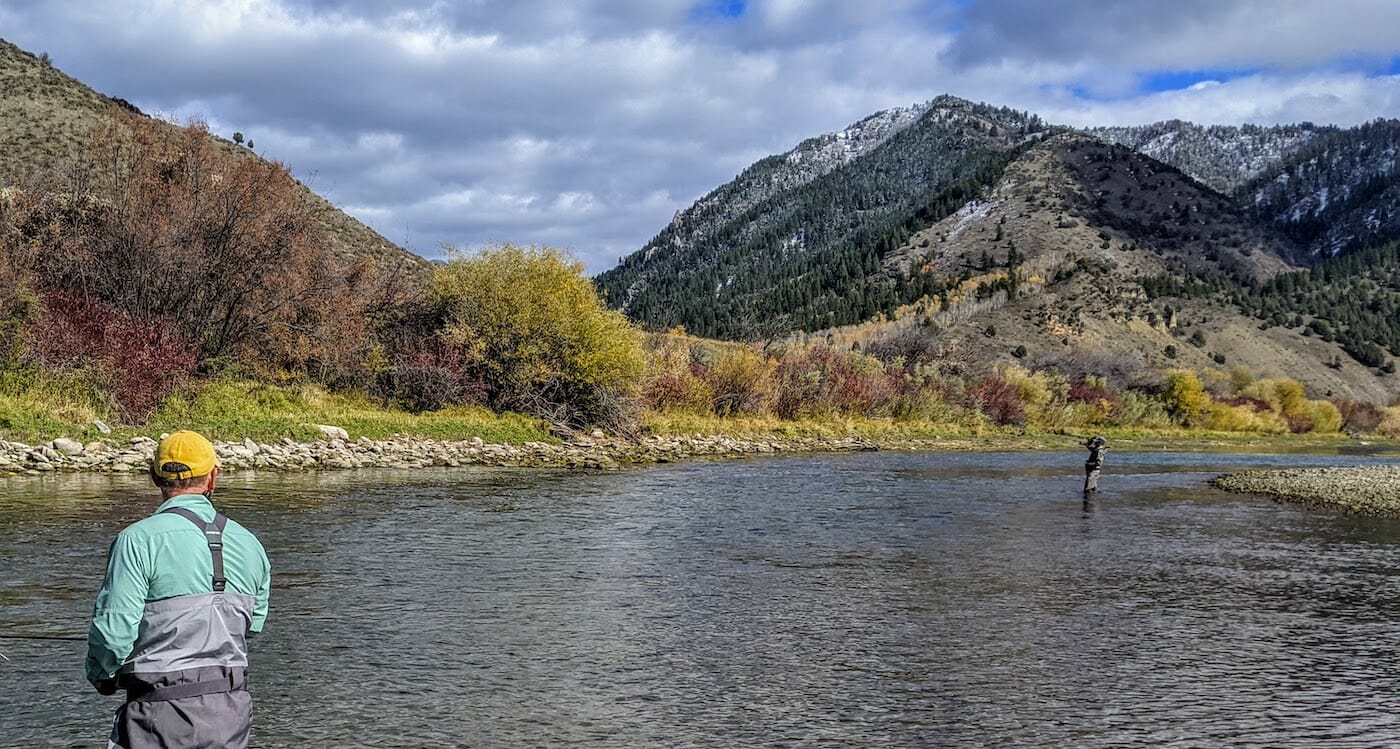Earl Harper watches as guide Mason Haggard demonstrates a casting technique used to reach rising fish across a fast-moving channel. Chris Hunt photo.
A guided fishing trip, even for experienced anglers, can be a great way to identify bad habits, learn new tactics and generally improve your fly-fishing game. Don’t believe me? I’ve been fly fishing for more than 30 years, and I learned a new streamer-fishing method this week, and I learned it from a 20-something guide. On my home water, no less.
My buddy Earl Harper and I spent two days fishing out of the new South Fork Lodge in Swan Valley, Idaho, about a 40-minute drive from my front door. On our second day, we floated the South Fork’s upper section with Ryan Troy, a guide from Driggs, Idaho, just over Pine Creek Pass from the lodge. Flows were way down from their summer peaks, and exposed gravel bars, subsurface structure and skinny water greeted us as we drifted this famous stretch of trout water.
As we started the day, both Earl and I declared to Ryan that we didn’t want to spend the day “staring at a bobber,” and that we wanted to throw streamers and, if the chance arose, dry flies at rising trout. This was music to Ryan’s ears — nymphing the South Fork can be very productive, but it’s also one of those techniques that guides can teach to complete newcomers just to put them on fish, and for guides, the technique can be exhausting. Each of the two nights we spent at the lodge, we were regaled with tales from fellow anglers who notched 50-fish days dredging with big stonefly nymphs trailed by size 22 Zebra midges under indicators. They were having the time of their lives. And the guides were constantly unhooking trout and whitefish with cold-numbed fingers.
Certainly, for almost anyone who fly fishes, spending a day catching a lot of fish is appealing. But for me and Earl … well, we wanted the chance to move a big trout or two with a streamer or to sight-fish to large risers with dry flies. When the South Fork is in its prime, it might be the best dry-fly river in America (I’d put it right up there with the Missouri for best-in-class honors), and fall, with its clockwork Blue-winged Olive hatches, is one of the river’s prime times.
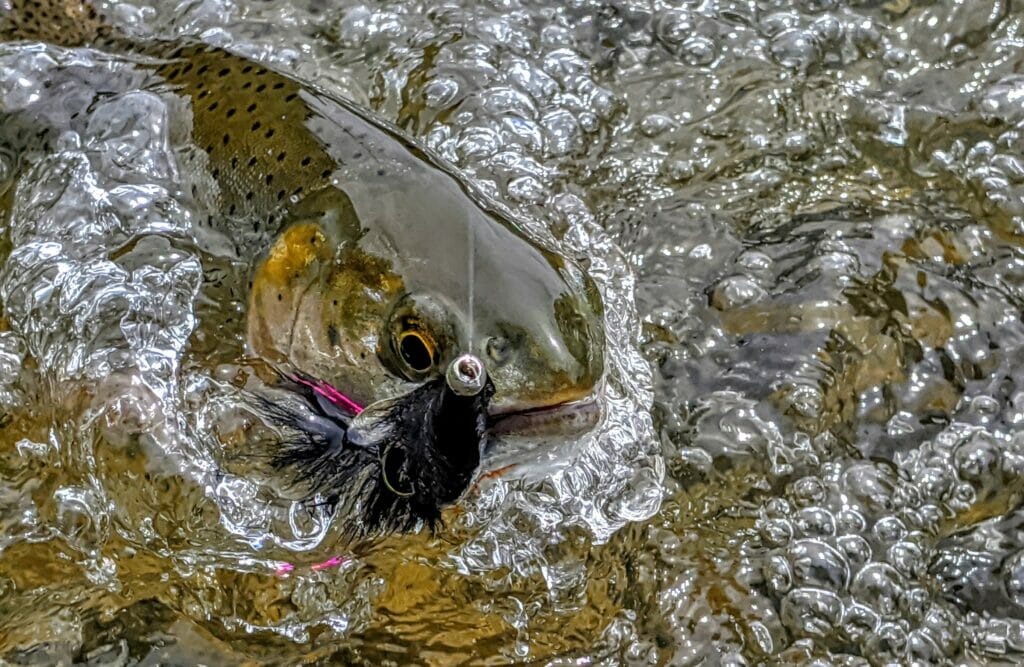
It’s also a good time to throw big streamers against the bank or toward structure in hopes of convincing a 20-inch brown trout or cutthroat to snag the fly (and, yes, cutthroats will hit streamers with zest). The morning we spent with Ryan, we started the day beating the banks with hefty streamer patterns, using sink-tip lines and convincing a few nice fish to make the commitment. It would have been great if the fish were hot on streamers, but the trout we brought to hand with the big flies were few and far between. We were working really hard.
About a third of the way through the morning, Ryan, noticing that the effort wasn’t matching up with the rewards, offered some advice.
“Next time you cast, don’t retrieve the streamer and then just recast,” he said. “Retrieve it about two-thirds to the boat, and then lift your rod and roll cast back toward the bank, without taking the streamer out of the water.”
That, he explained, would put a belly in the fly line with the arch of the curve facing the bank. Then, with the next strip, the fly would actually “swim” back toward the bank. The effect? A fly that stays in the strike zone longer as the guide keeps the boat within a reasonable distance of the bank (or the intended structure, like sunken cottonwood trees or big boulders). It was a great tip, and part of a two-day fishing trip where we also got a refresher on the reach cast from guide Mason Haggard, who put us on rising trout across fast-moving channel.
Here’s how Ryan’s streamer tip works (and my apologies for the rough drawings — I’m the first to admit that I’m not much of an artist!):
One: Make a cast to the bank (or the intended target).
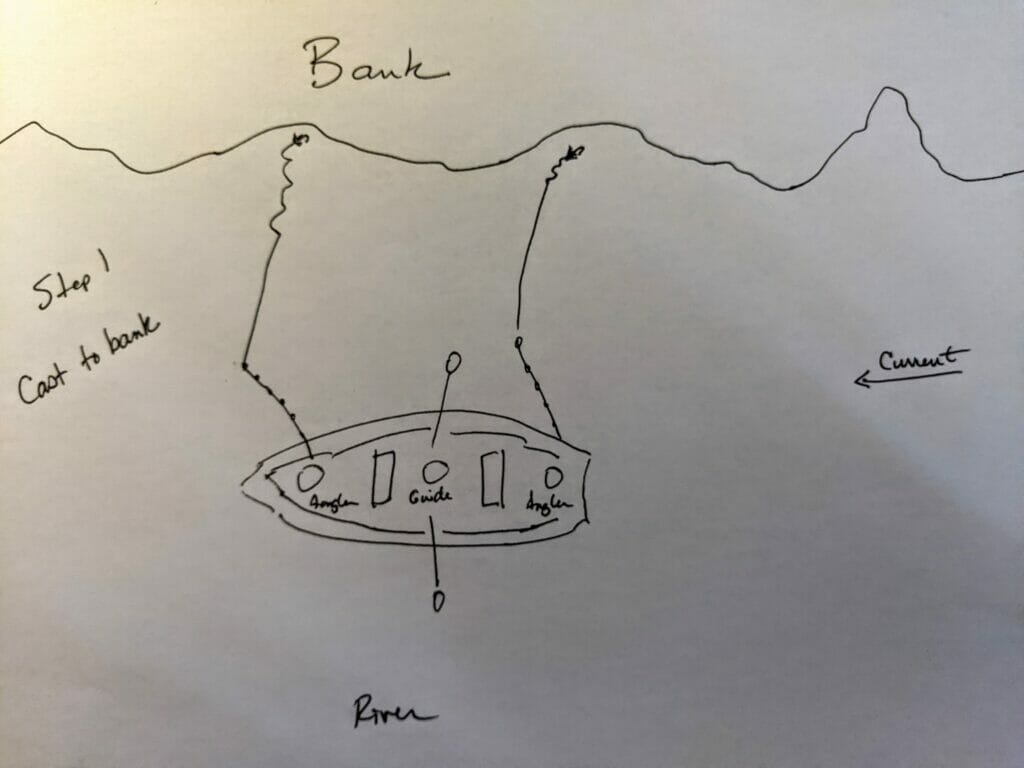
Two: Retrieve the streamer toward the boat, but only about 60 percent or two-thirds of the way back.
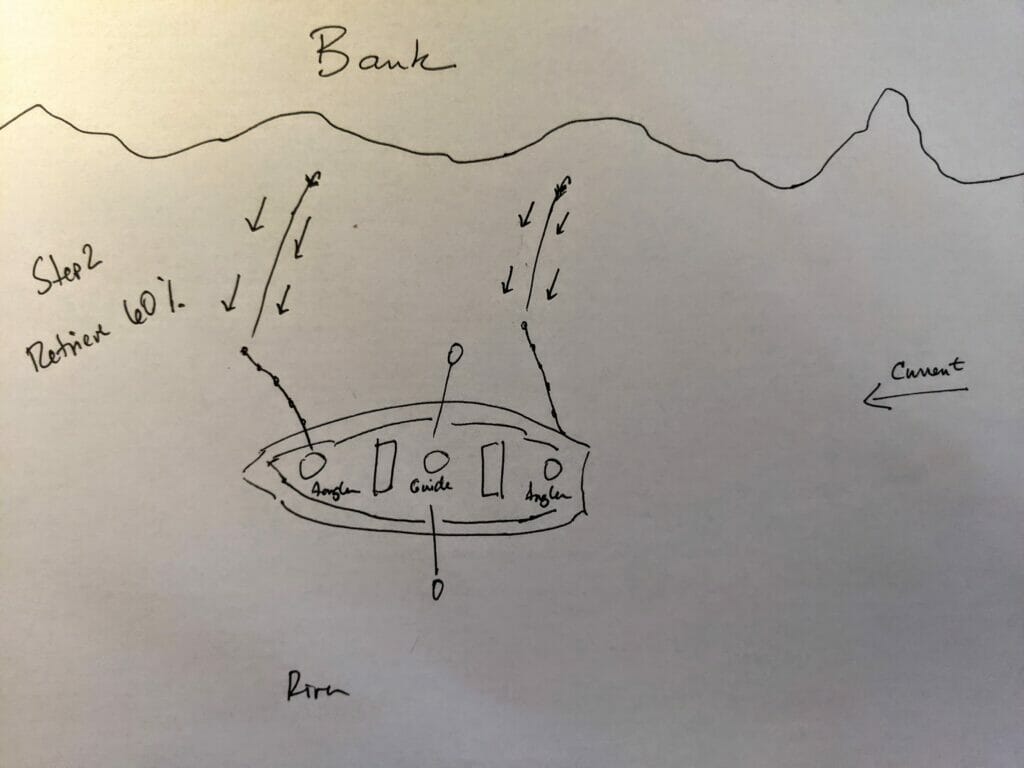
Three: Lift your rod and add some some slack to the line in the water.
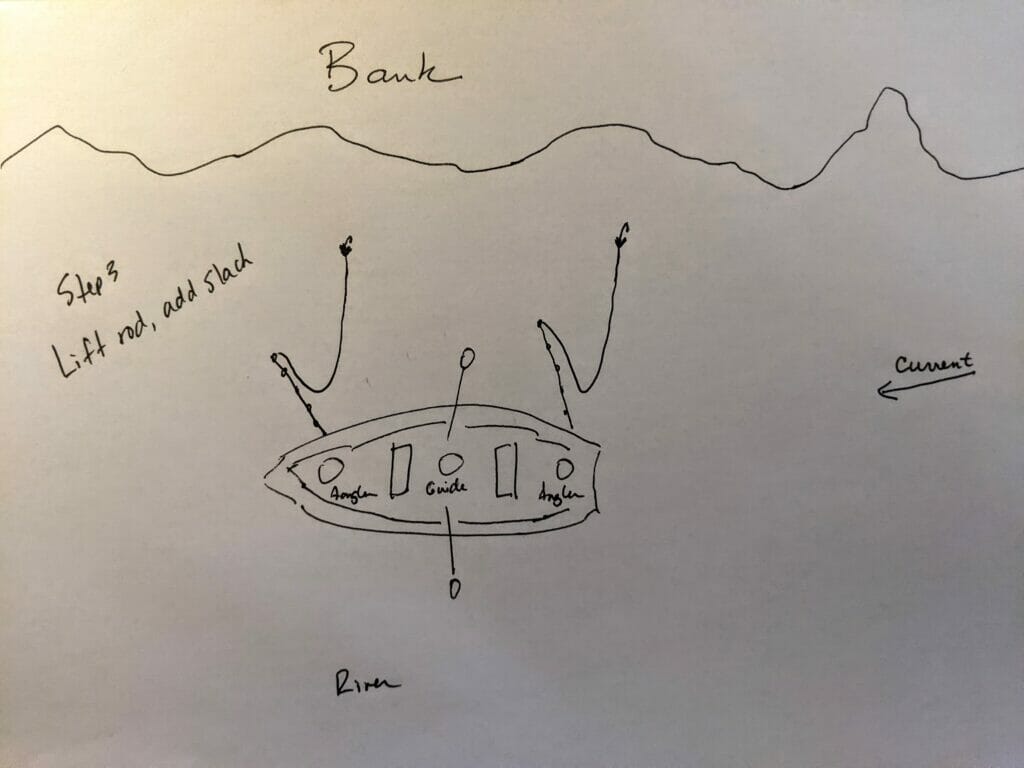
Four: Roll cast back toward the bank, with the fly line landing upstream of the fly. Try not to lift the fly out of the water on the roll cast.
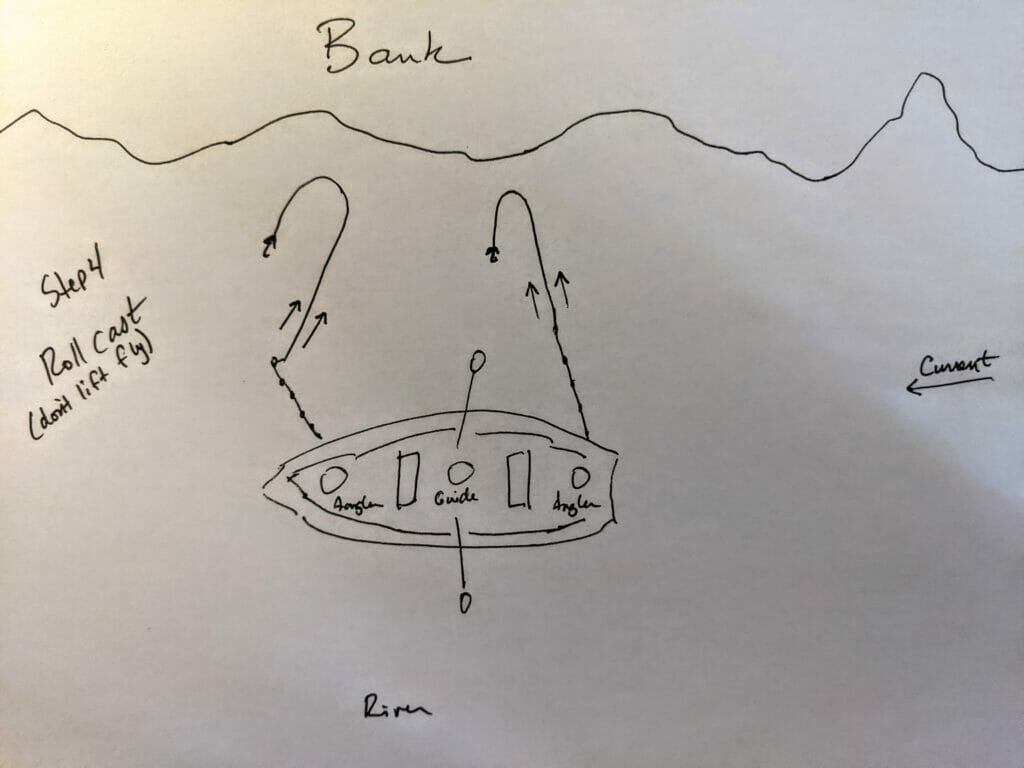
Step five: With a belly in the fly line facing the bank, strip your line. Your fly will move toward the bank.
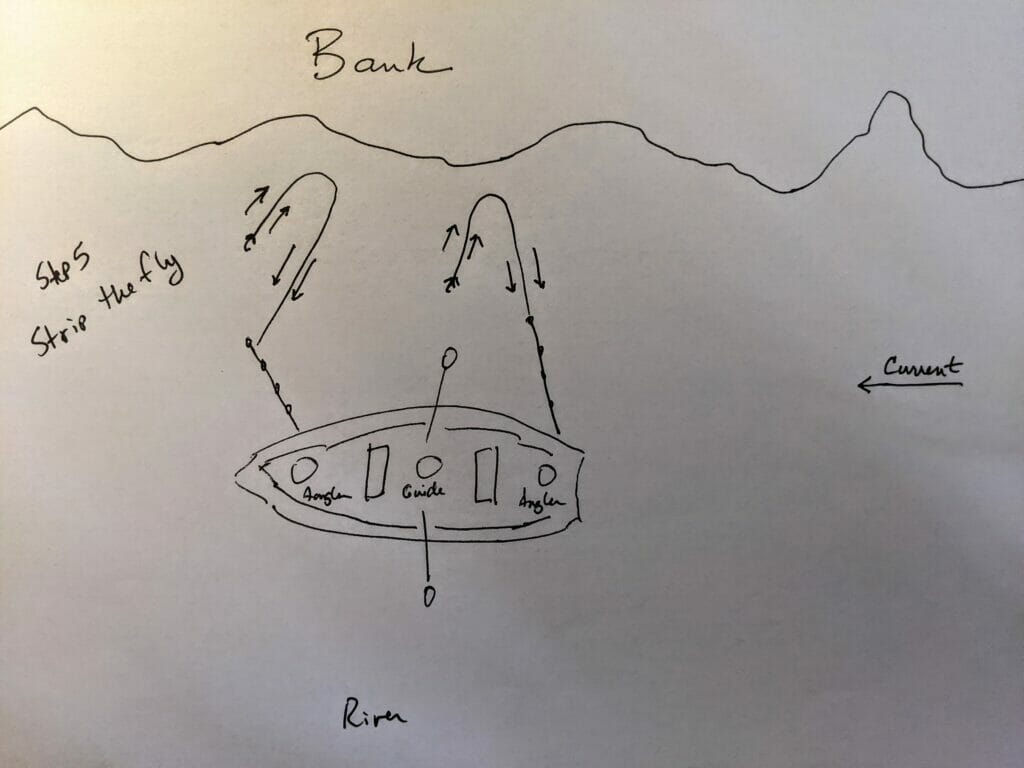
Step six: Wash, rinse, repeat.
We floated a good half-mile of riverbank using this technique and not once did I have to lift the weighted fly or the heavy sink-tip line from the water—it was refreshingly easy. But the real bonus? The fly never left the water and it worked the strike zone continuously.
It was brilliant. And, not being a die-hard drift-boat angler, it was something I hadn’t tried before.
Needless to say, I was grateful to Ryan for showing me the technique — it will absolutely come in handy on future trips down the South Fork or wherever I have the good fortune to be fishing from a drift boat.
Thanks to a young guide who is also a good teacher, this old dog has a new trick.



